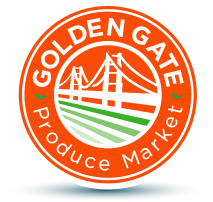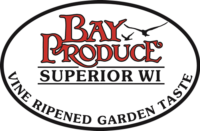A recent question I posed to the LinkedIn Fresh Produce Discussion Group deserves a blog post to recount.
The question I asked the 20,700+ strong group was this, “What is one thing produce growers could do that would reduce food waste/loss while improving their profitability at the same time?”
I have only excerpted a few of the 30 answers as of Jan. 28, but the collective wisdom of the group made a multitude of convincing points on the central question. Here are some:
- KL: Pay for live temperature tracking devices on fresh produce loads--proven to lower claims! It is very cheap insurance that lowers the amount of produce lost to temperature claims.
- JG: Promote ugly produce... (misshapen) items and promote the benefits of these ... which are the same as well shaped fruit/veg
- AC: Every grower should have a buyer that buys “No. 2” produce. A lot of growers are losing great produce due to some of the ridiculous specifications requested by brokers.
- JP: In my circles, matching supply and demand quantities is getting a lot of consideration. Understanding that crop yields are variable, it is not realistic to demand the public eat 50% more watermelon this week just because they are there. So, in surplus situations, identifying the amount in excess of quantity demanded and not adding any additional value to the units that will go unused (i.e. leaving it in the field or otherwise abandoning it at the earliest possible point in the supply chain)
- RP: Continue to seek varieties of produce that are irresistible in eating qualities. Then remove the undesirable older varieties. Don’t bring low grade product to the packing facilities. Take lesser grades right to compost and then back to the earth. Then we will avoid pouring fuel, packaging and labor costs into low grade produce that can never ROI. We are dreaming if we think that works. Horticulture and tech will be the key to better packouts and reducing second grade products in the future as an industry.
- JB: On a whole pushing to undo the stigma that irregularly shaped (ugly) produce is somehow bad would help immensely.
- EP: Continue to strive to get consumers to eat more fruits and vegetables. If we had anywhere near the consumption levels of salty snacks and candy everyone would need to plant more!
- LH: Composting & then creating compost buckets for urban growers in places where good soil is hard to come by?
- VN: Your question is too general, I think some specifics are needed. You are talking about the small, medium or large growers? The type of farm, green house or ranch, Location, type of crop ... a lot of variables that totally change the answers. One of the options will be direct sale to customers (if your customers is less than 250 miles from you is local). Another is preorder and buying in advance large quantities. We have 80% of the data visualization for the food supply chain done (from the farms, grocery stores, cold chain, ingredients companies and local markets) ...
- GE: Like any other business. Plan better and continuously work on their business not in it.
- JL: Cut out unnecessary cost! We can show many of the increased costs vertical farmer choose to accept are not needed - especially when they lock out the ability to address many additional issues.
TK: Thanks to the many who responded to this question; I was surprised that packaging did not come up in comments so far.
I thought of this question for the group in response to a new study from the U.S. Department of Agriculture’s Economic Research Service.
The gist of the report speaks to the point that preserving/enhancing grower profitability is a necessary element in any attempt to cut produce waste at the farm level. Find that coverage here.
















